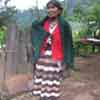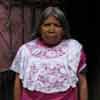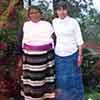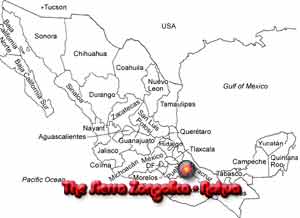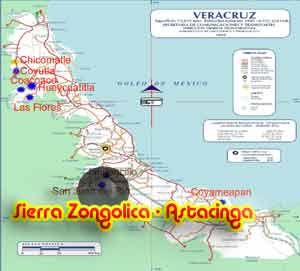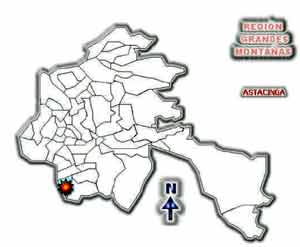 |
 |
 |
 |
|
||||||||||||||||||||||||||||||||||
|
Astacinga, Veracruz, Mexico is Nahua town. Traditional dress here is almost extinct. It a was blouse with a large lace collar, black wrap skirt, solid colored sash and reboso.
The name Astacinga comes from the Nahuatl means “place of the white cranes” it was part of the Nonocalos dominion. They paid tribute to the Aztecs. It is located in the Zona Fria (cold Zone) of the Sierra Zongolica the altitude is 7475 feet above sea level. Wood and corn are the principal crops. Based on the 2005 census there were 5600 people in the municipality 83% speak Nahuatl. Nahua of the Sierra Zongolica – The Sierra Zongolica is located in the Grand Mountain part of the central region of the State of Vera Cruz. The Zongolica is divided in to two zones the hot zone and the cold zone, these divisions are based on altitude more than any thing else and the costumes are distinct in the two regions. In the cold zone the costume is a black wool wrap skirt, a lace blouse, hand woven belt, a sweater and a reboso. The men wear a muslin pants and shirt with a wool poncho depending on the resource of the person they may or may not wear sandals. In the hot zone it is all white muslin blouse and skirt with pleats on the sleeves and in some cases a light machine embroidery. The mens costume is the same in both regions. In the hot area the costume is disappearing fast. The few villages shown in these galleries were far removed and only a few elderly women still wore traditional clothing. The Sierra Zongolica is inhabited by Nahua speakers who are descendent from the Nonoalco peoples. There are 14 municipalities that form this region of the State of Vera Cruz, part of the Zongolica are in the State of Puebla and are not treated here ( see Nahua of Puebla ( Tehuacan) . As mentioned earlier the peoples of this region have strong ties to the Nahua culture and due to their isolation most (90%) speak Nahuatl as their first language and even n the language of commerce. Traditional healing is alive and well in the Sierra and there is an active group of curanderos that live in each community. These curanderos (healers) use herbs or a type of indigenous chiropractic healing (hueseros) and spiritual healings. I was able to go with these healers to a traditional ceremony performed in many parts of the Zongolica called Xochitlali. Xochitlali is a ceremony which any one can perform to ask forgiveness of mother earth for any harm caused by last years planning cycle and to ask of permission and blessing on the next agricultural cycle. This ceremony was held in a cave where the healers danced and then set up a small alter and prayed in Nahuatl and Spanish. Crafts in the region include the weaving of wool and cotton clothing, and the weaving palm items for daily use, clay is used to make all the daily plates and of course a comal where tortilla are cooked. The road building in the region will help open it up; I am really not sure how it will help the individual subsistence farmer. But at least they will be able to leave the area faster. To get into the Sierra Zongolica you can enter from the town of Orizaba located at the foot of the largest volcano in Mexico. On your map follow the freeway from Puebla toward Veracruz and exit at Orizaba. Bob Freund 2007 |
|||||||||||||||||||||||||||||||||
|
||||||||||||||||||||||||||||||||||
